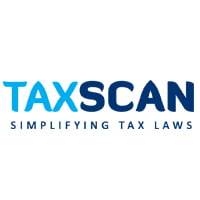GST applicable on Free Transfer of Assets to Landlord on Vacation of Leased Premises: AAR [Read Order]
![GST applicable on Free Transfer of Assets to Landlord on Vacation of Leased Premises: AAR [Read Order] GST applicable on Free Transfer of Assets to Landlord on Vacation of Leased Premises: AAR [Read Order]](https://www.taxscan.in/wp-content/uploads/2016/12/For-Lease-Taxscan.jpg)
The Authority of Advance Rulings (AAR) in Karnataka ruled that free transfer of assets to the landlord on vacation of leased premises shall amount to supply within the meaning of “supply” within section 7 of the Central Goods and Services Tax Act, 2017 and is chargeable to tax under the GST Acts.
The ruling was made by a bench constituting of Sn. Harish Dharnia, Addl. Commissioner of Central Tax, Member (Central Tax) and Dr. Ravi Prasad M.P. Joint Commissioner of Commercial Taxes, on an application filed by M/s. Aquarelle India Private Limited.
The applicant is a registered dealer having a registered office in Karnataka. The leased premise of the applicant was taken on lease from 01.07.2011 to 30.06.2022 with a lock-in period of the first three years. The applicant wishes to vacate the leased premises. The possession of the premises will be handed over to the owner along with fixtures to the building which cannot be dismantled on vacating the leased premises. The company wishes to vacate the building with the fastened assets and hand over to the building owner in “as is where is’ condition without any consideration charged for the assets.
The applicant sought advance ruling in matter of whether disposing off assets (no CENVAT/VAT Credit was taken) fastened to the building on delivering possession to the lesser, on which no consideration will be received, shall fall within the ambit of “Supply” as per Section 7 of Central Goods and Services Tax Act, 2017 and shall be chargeable with GST. The applicant also sought ruling of whether the value appearing in the books as on the date of disposal may be construed as the “open market value” on which GST is to be discharged as per Rule 27 of the CGST rules 2017?
The applicant argued that the assets were put to use in the pre-GST regime without availing of CENVAT/VAT credit and hence the disposal of such assets in the GST regime should not amount to supply and hence not liable to GST. The applicant also contended that treating such transactions as “Supply” might lead to double taxation, which goes against the very spirit of the GST Law. The applicant further submitted that if it is treated as supply, and the value should be ascertained in line with Rule 27 of the CGST Rules 2017, i.e., the open market value.
Holding that the transaction is not covered under ‘supply’ as under Section 7 (1) of the Central Goods and Service Tax Act, the Authority observed that the in the instant case there is a permanent transfer of business assets and admittedly they are capitalized before the advent of the GST Act and no input tax credit is claimed under the earlier law. Further, there is also no claim of the input tax credit, under the present GST Law.
The Authority further observed that the said transaction would be treated as a supply of goods as per entry no. 4(a) of Schedule II to the CGST Act, i.e., transfer of business assets. The Authority Substantiated the observation by reasoning that assets sought to be transferred are capitalized under the head “Office equipment, furniture, and fittings” and forms the part of the assets of the business entity, then such transfer or disposal would be a supply of goods by the applicant and it is immaterial whether the said transfer/disposal is for a consideration or not.
The Authority hence concluded that “the transaction of transfer of ownership of business assets in the course or furtherance of business for a consideration (being the monetary value in relation to the transfer of such assets) would constitute a supply in accordance with the provisions of clause (a) of Section 7(1) of the CGST Act and the same would be the supply of goods in accordance with the entry no. 4(a) of the Schedule II to the CGST Act”.
The Authority also ruled that “the value of such supply of goods would be: (a) open market value of such supply; (b) value of supply of goods of like kind and quality; (c) 110% of the book value of such goods in the books of accounts; and if none of the above is possible, it needs to be determined as per the rule 31”
To Read the full text of the Order CLICK HERE

